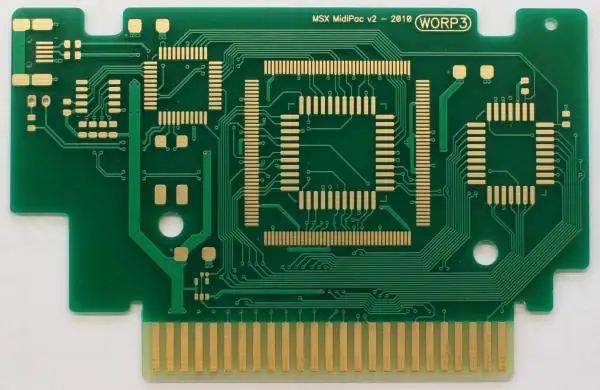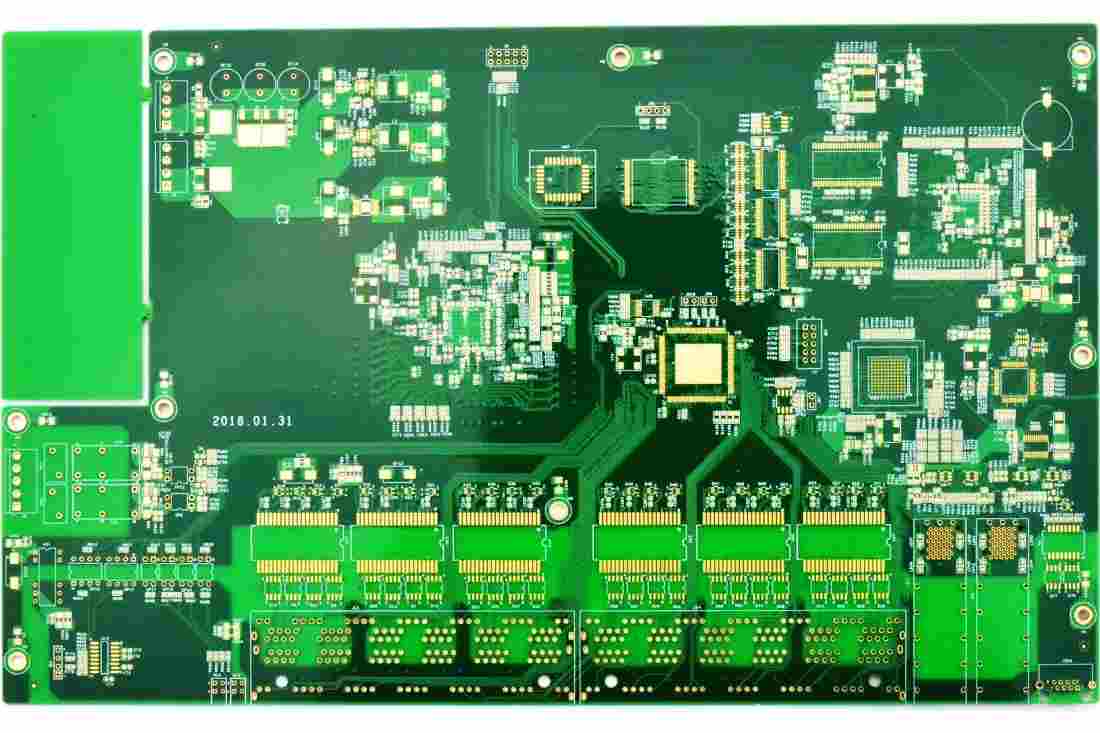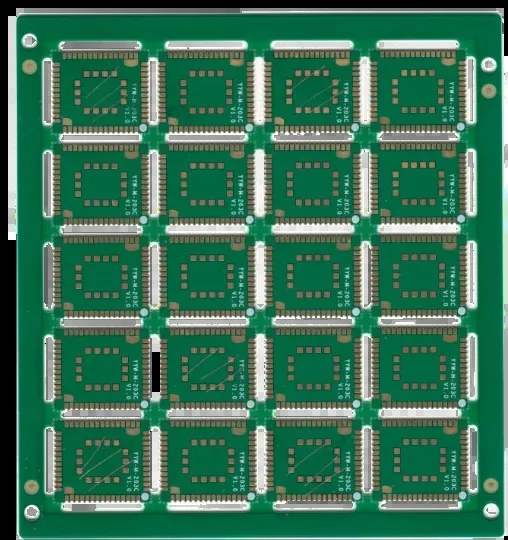
Precautions for copper sheet wiring of printed circuit board
Current density of wiring: most electronic circuits are now made of insulated boards bound with copper. The thickness of common circuit board copper sheet is 35 μ m. The current density value can be taken according to the experience value of 1A/mm for wiring, and the specific calculation can be seen in the textbook. In order to ensure the mechanical strength of wiring, the line width shall be greater than or equal to 0.3mm (the minimum line width of other non power circuit boards may be smaller). The thickness of copper sheet is 70 μ M circuit board is also common in switching power supply, so the current density can be higher.
In addition, the commonly used PCB design tool software generally has design specification items, such as line width, line spacing, dry tray via size and other parameters can be set. When designing the circuit board, the design software can automatically execute according to the specifications, which can save a lot of time, reduce part of the workload and reduce the error rate.
Generally, double-sided boards can be used for circuits or wiring lines with high reliability requirements. It is characterized by moderate cost, high reliability, and can meet most applications.
Some products of the modular power supply line also use multilayer boards, which are mainly convenient for integrating power devices such as transformer inductance, optimizing wiring, and cooling power tubes. It has the advantages of beautiful and consistent process and good heat dissipation of transformer, but its disadvantages are high cost and poor flexibility, and it is only suitable for industrial large-scale production.
Single panel and market circulating general switching power supply almost all adopt single sided circuit board, which has the advantage of low cost. Some measures in pcb design and pcb production process can also ensure its performance.
Today, I would like to talk about some experiences in the design of single-sided printed circuit boards. Because single panels are cheap and easy to manufacture, they are widely used in switching power supply circuits. Because they have only one side bound with copper, the electrical connection and mechanical fixation of devices must rely on that layer of copper skin, and care must be taken when handling them.
In order to ensure good welding mechanical structure performance, the single panel bonding pad should be slightly larger to ensure good binding force between the copper sheet and the substrate, so as to prevent the copper sheet from peeling and breaking when subjected to vibration. Generally, the width of welding ring shall be greater than 0.3mm. The diameter of the pad hole should be slightly larger than the diameter of the device pin, but should not be too large, to ensure that the shortest distance between the pin and the pad is connected by solder. The size of the pad hole should not interfere with the normal inspection. The diameter of the pad hole is generally 0.1-0.2mm larger than the pin diameter. The multi pin device can also be larger to ensure smooth inspection.

The electrical wiring shall be as wide as possible. In principle, the width shall be greater than the pad diameter. In special cases, the line must be widened at the intersection of the wiring and the pad (commonly known as generating teardrops) to avoid the fracture of the line and the pad under certain conditions. In principle, the minimum line width shall be greater than 0.5mm.
The components on the single panel shall be close to the circuit board. For components requiring overhead heat dissipation, a bushing shall be added on the pin between the component and the circuit board to support the component and increase the insulation. The impact of external force impact on the connection between the pad and the pin shall be minimized or avoided to enhance the firmness of welding. The components with large weight on the circuit board can increase the support connection points, which can strengthen the connection strength with the circuit board, such as transformers and power device radiators.
The single panel welding face pin can be left longer without affecting the distance between it and the shell. Its advantage is that the strength of the welding part can be increased, and the welding area can be increased. The phenomenon of faulty welding can be found immediately. When the pin is long and the leg is cut, the force on the welding part is small. In Taiwan and Japan, it is often used to bend the device pin on the welding surface to form a 45 degree angle with the PCB, and then weld it. The reason is the same as above. Today, I will talk about some issues in the design of dual panel. The performance and indicators of double-sided printed circuit boards are much better than those of single panel when they are used in applications with high requirements or high wire density.
Because the hole of the double-sided plate pad has been metallized with high strength, the welding ring can be smaller than that of the single panel, and the hole diameter of the pad can be slightly larger than the pin diameter, because it is conducive to the penetration of solder solution into the top pad through the hole during the welding process, so as to increase the welding reliability. However, there is a disadvantage. If the hole is too large, some devices may float under the impact of jet tin during wave soldering, resulting in some defects.
For the treatment of high current wiring, the line width can be treated as per the previous post. If the width is not enough, it can be generally solved by tinning the wiring to increase the thickness. There are many methods.
1. Set the routing to the pad attribute, so that the routing will not be covered by the solder mask during PCB manufacturing, and the hot air leveling will be tin plated.
2. Place the pad at the wiring place, and set the pad to the shape that requires wiring. Pay attention to setting the pad hole to zero.
3. This method is the most flexible for placing lines on the solder mask layer, but not all circuit board manufacturers will understand your intention, so it needs to be described in words. The position where the wire is placed on the solder mask will not be coated with solder mask
Several methods of PCB tin plating are as above. It should be noted that if the wide wiring is all tin plated, a large amount of solder will be bonded after welding, and the distribution is uneven, affecting the appearance. Generally, thin strips with tin plating width of 1~1.5mm can be used, and the length can be determined according to the line. Double sided circuit boards with tin plating interval of 0.5~1mm provide great selectivity for layout and routing, which can make the wiring more reasonable. As for grounding, the power ground and signal ground must be separated, and the two grounds can be combined at the filter capacitor to avoid the unexpected factors of instability caused by large pulse current passing through the signal ground connection. The signal control loop should adopt the one point grounding method as far as possible. There is a technique to place the ungrounded wiring on the same wiring layer as far as possible, and finally lay the ground wire on the other layer. Generally, the output line passes through the filter capacitor first, and then to the load. The input line must also pass through the capacitor first, and then to the transformer. The theoretical basis is to let the ripple current pass through the filter capacitor.
Voltage feedback sampling. In order to avoid the influence of large current passing through the wiring, the sampling point of feedback voltage must be placed at the end of the power output to improve the load effect index of the whole machine.
The wiring from one wiring layer to another is generally connected by via, which should not be realized through the device pin pad, because this connection relationship may be broken when inserting devices. In addition, there should be at least two via when every 1A current passes through. In principle, the via hole diameter should be greater than 0.5mm, and generally 0.8mm can ensure processing reliability.
The device heats up. In some low-power power supplies, the wiring of the circuit board can also serve as the heat dissipation function. Its feature is that the wiring should be as wide as possible to increase the heat dissipation area. It does not apply solder resistance. If possible, vias can be placed evenly to enhance the thermal conductivity.







